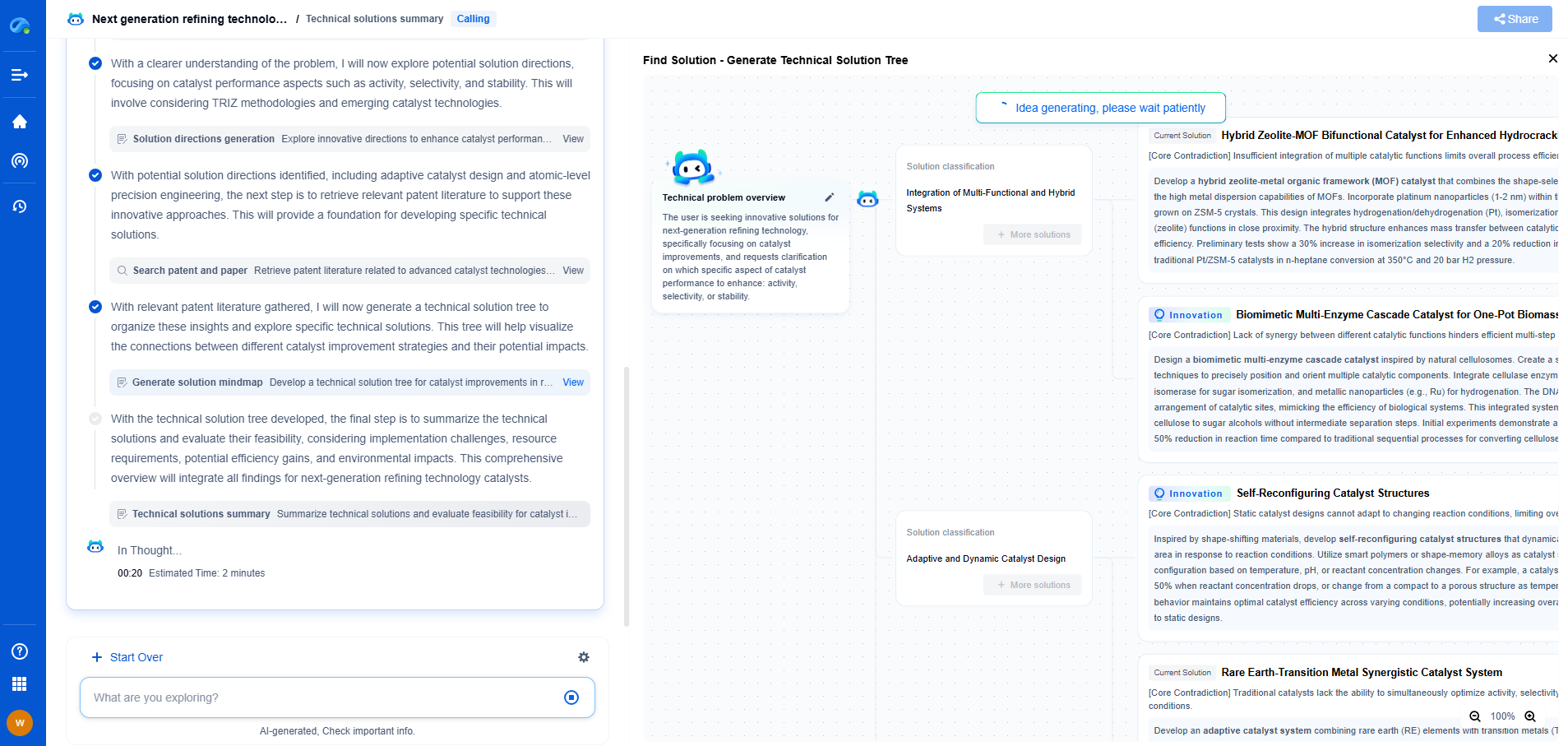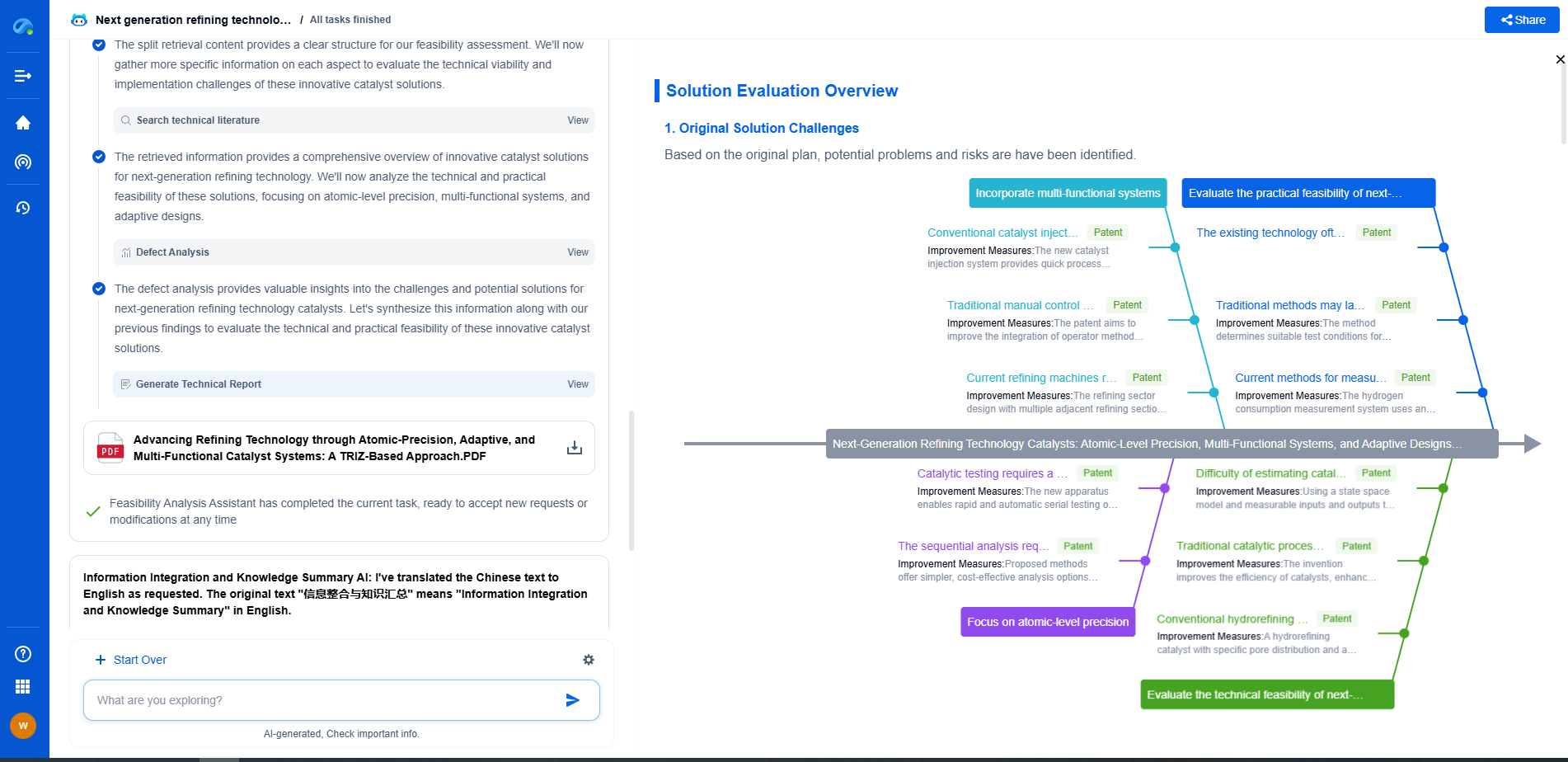PID vs. Model Predictive Control: Which Is Better for Industrial Applications?
JUL 2, 2025 |
In the realm of industrial automation and control, two prominent approaches often come into the spotlight: Proportional-Integral-Derivative (PID) control and Model Predictive Control (MPC). Both have their advantages and shortcomings, making the choice between them complex. This article aims to provide an in-depth analysis of both control strategies to help determine which is better suited for industrial applications.
Understanding PID Control
PID control is one of the most widely used control algorithms in industrial applications. It operates on a simple principle: continuously calculates an error value as the difference between a desired setpoint and a measured process variable and applies a correction based on proportional, integral, and derivative terms. The simplicity of the PID controller allows for easy implementation and tuning, making it a go-to option for many industries.
Advantages of PID Control
1. Simplicity: PID controllers are relatively simple to design and implement, which reduces development time and costs.
2. Robustness: With proper tuning, PID controllers can handle a wide range of process dynamics effectively.
3. Real-time response: PID controllers provide immediate corrective actions in response to changes in the process variable, ensuring stable operations.
Limitations of PID Control
1. Non-linearity: PID controllers may struggle with non-linear processes or systems with varying dynamics.
2. Tuning complexity: Achieving optimal performance requires proper tuning, which can be a challenging and time-consuming task, especially for complex systems.
3. Limited predictive capabilities: PID does not account for future events or disturbances, which can result in suboptimal control performance.
Exploring Model Predictive Control
Model Predictive Control (MPC) represents an advanced control strategy that utilizes a dynamic model of the process to predict and optimize future control actions. By solving an optimization problem at every control interval, MPC can account for future constraints and disturbances, making it highly effective in complex and multivariable processes.
Advantages of MPC
1. Predictive capabilities: MPC's ability to predict future behavior enables it to anticipate and mitigate potential disturbances.
2. Handling constraints: MPC can incorporate constraints on inputs and outputs, making it suitable for processes with strict operational limits.
3. Multivariable control: MPC can manage multiple inputs and outputs simultaneously, optimizing overall system performance.
Limitations of MPC
1. Complexity: MPC requires a detailed model of the process, which can be difficult and costly to develop and maintain.
2. Computational demand: The optimization process in MPC requires significant computational resources, potentially limiting its application in fast-changing environments.
3. Tuning difficulty: While MPC offers greater flexibility, it also introduces complexity in tuning compared to PID control.
Comparing PID and MPC
The choice between PID and MPC largely depends on the specific requirements of the industrial application. For processes that are simple, linear, and require fast response times, PID control often suffices. Its low cost, simplicity, and robustness make it a preferred choice in many traditional applications.
Conversely, MPC shines in complex, multivariable scenarios where prediction and constraint handling are critical. Industries such as chemical processing, oil refining, and aerospace often benefit from the advanced capabilities of MPC, despite its higher implementation cost and complexity.
Conclusion
Ultimately, the decision between PID and MPC should be based on a thorough analysis of the process requirements, constraints, and resources available. While PID continues to be a reliable workhorse in many industries, the advanced capabilities of MPC cannot be overlooked for complex and dynamic environments. By understanding the strengths and limitations of each approach, industries can make informed decisions to optimize their control strategies for improved efficiency and performance.
Ready to Reinvent How You Work on Control Systems?
Designing, analyzing, and optimizing control systems involves complex decision-making, from selecting the right sensor configurations to ensuring robust fault tolerance and interoperability. If you’re spending countless hours digging through documentation, standards, patents, or simulation results — it's time for a smarter way to work.
Patsnap Eureka is your intelligent AI Agent, purpose-built for R&D and IP professionals in high-tech industries. Whether you're developing next-gen motion controllers, debugging signal integrity issues, or navigating complex regulatory and patent landscapes in industrial automation, Eureka helps you cut through technical noise and surface the insights that matter—faster.
👉 Experience Patsnap Eureka today — Power up your Control Systems innovation with AI intelligence built for engineers and IP minds.
- R&D
- Intellectual Property
- Life Sciences
- Materials
- Tech Scout
- Unparalleled Data Quality
- Higher Quality Content
- 60% Fewer Hallucinations
Browse by: Latest US Patents, China's latest patents, Technical Efficacy Thesaurus, Application Domain, Technology Topic, Popular Technical Reports.
© 2025 PatSnap. All rights reserved.Legal|Privacy policy|Modern Slavery Act Transparency Statement|Sitemap|About US| Contact US: help@patsnap.com

